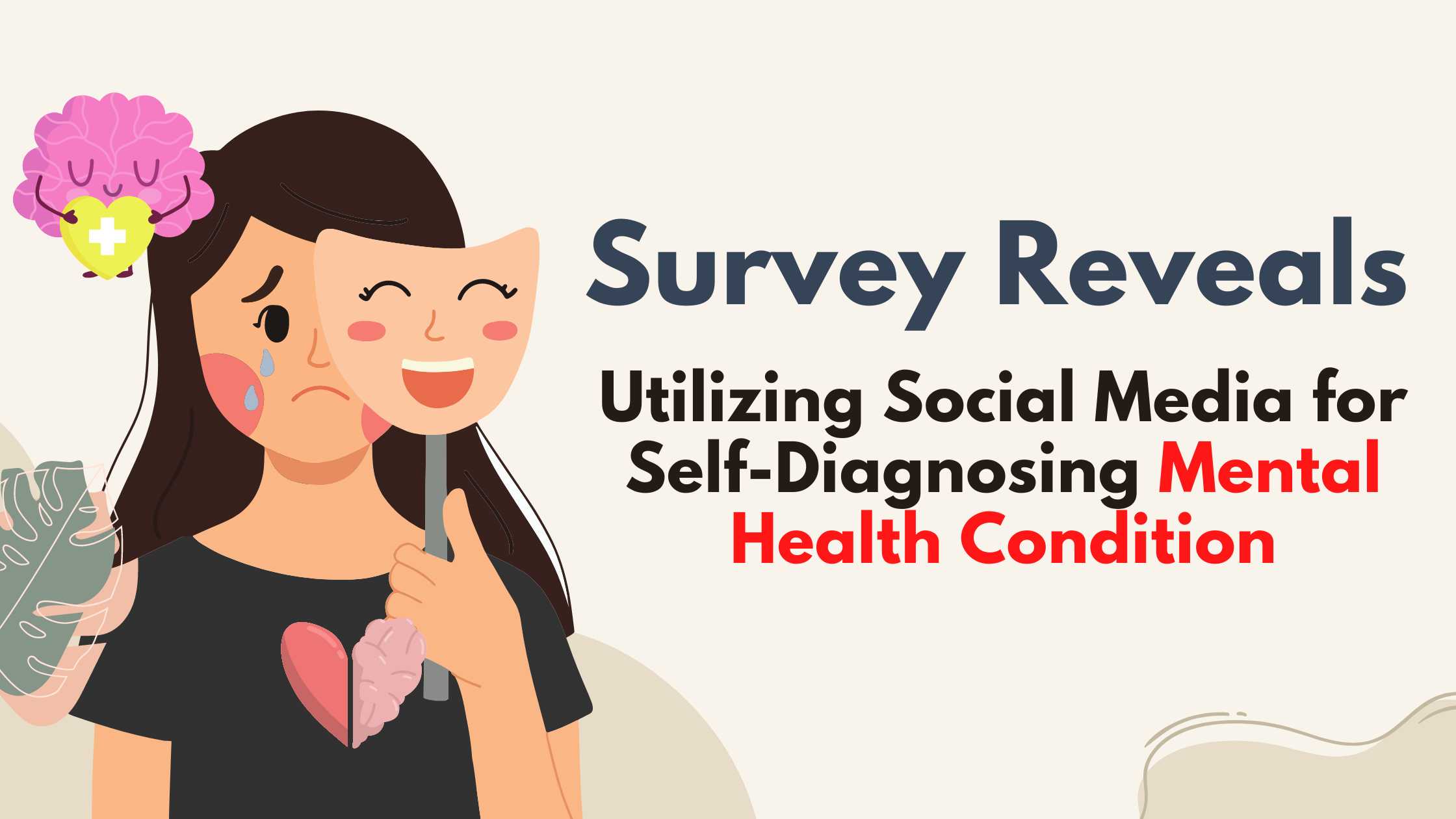Social Media Addiction – Survey Reveals Children Utilizing Social Media for Self-Diagnosing Mental Health Condition

Social Media Addiction
In the digital age, social media platforms have become integral parts of adolescents’ lives, shaping their perceptions, behaviors, and even their understanding of mental health. A recent survey has shed light on a concerning trend: an increasing number of young people are turning to social media to self-diagnose mental health conditions. This phenomenon raises questions about the role of social media in adolescent mental health and the potential consequences of self-diagnosis. In this essay, we will explore the implications of this trend, examining its causes, effects, and possible interventions.
The Rise of Self-Diagnosis on Social Media
Social media platforms provide a wealth of information on various topics, including mental health. Adolescents, in particular, are avid users of these platforms and often turn to them for advice and support. However, the proliferation of self-diagnosis tools and communities on social media has led to a surge in young people diagnosing themselves with mental health conditions. Factors such as easy access to information, peer influence, and the desire for validation contribute to this trend.
Also Read…. Post-COVID-19 era: paving the way to physical, mental and emotional
The Influence of Social Media on Adolescent Mental Health
Social media can have both positive and negative effects on adolescent mental health. On one hand, it provides a platform for social connection, self-expression, and support-seeking. On the other hand, it can exacerbate feelings of inadequacy, anxiety, and depression through unrealistic comparisons, cyberbullying, and exposure to harmful content. The trend of self-diagnosis further complicates this landscape, as young people may misinterpret symptoms and seek validation from online communities, leading to self-stigma and reluctance to seek professional help.
The Dangers of Self-Diagnosis
While self-diagnosis may provide a sense of empowerment and validation for some adolescents, it poses significant risks. Self-diagnosis tools on social media are often oversimplified and lack accuracy, leading to misinterpretation of symptoms and mislabeling of mental health conditions. Moreover, self-diagnosis may perpetuate self-stigma and discourage young people from seeking professional help, leading to delayed intervention and worsening mental health outcomes. Additionally, self-diagnosis may contribute to the medicalization of normal emotional experiences, leading to unnecessary anxiety and distress.
Addressing the Root Causes
To address the trend of self-diagnosis on social media, it is essential to understand its underlying causes. Factors such as lack of access to mental health resources, stigma surrounding mental illness, and the influence of social media algorithms contribute to this phenomenon. Interventions aimed at promoting mental health literacy, fostering critical thinking skills, and creating safe spaces for open dialogue can help mitigate the impact of self-diagnosis. Additionally, efforts to improve access to affordable and culturally competent mental health services are crucial in providing young people with accurate diagnosis and support.
Promoting Responsible Social Media Use
Educating adolescents about the risks and limitations of self-diagnosis on social media is essential in promoting responsible use of these platforms. Schools, parents, and mental health professionals play a critical role in teaching young people how to critically evaluate online information, seek credible sources, and recognize when professional intervention is necessary. Moreover, fostering open communication and reducing the stigma surrounding mental illness can encourage adolescents to seek help when needed and prevent reliance on self-diagnosis as a substitute for professional care.
Future Directions and Challenges
As social media continues to evolve, new challenges and opportunities emerge in the realm of adolescent mental health. Researchers, policymakers, and technology companies must collaborate to develop evidence-based interventions, promote digital literacy, and safeguard young people’s well-being online. Additionally, ongoing research is needed to understand the long-term effects of self-diagnosis on adolescent mental health and inform targeted interventions.
Conclusion
The trend of adolescents using social media to self-diagnose mental health conditions highlights the complex interplay between technology, mental health, and youth development. While social media platforms offer unprecedented opportunities for connection and support, they also pose risks for young people’s mental health. Addressing the phenomenon of self-diagnosis requires a multifaceted approach, including education, advocacy, and policy reform. By promoting critical thinking skills, reducing stigma, and improving access to professional care, we can empower young people to navigate social media responsibly and prioritize their mental well-being.




